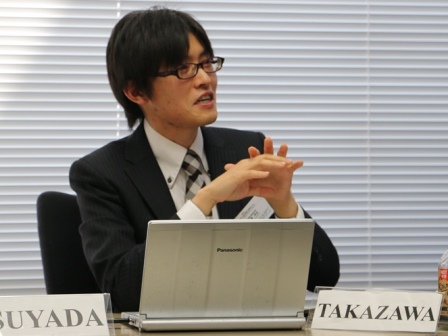Takazawa’s of the Hiroshima Peacebuilders Center found that, while many scholars had argued “R2P’s setback” after the Libya incident of 2011, their views mostly formed by a partial perspective focusing on “forcible measures” under “Pillar Three (timely and decisive response)” of the R2P.

This presentation focused on a conceptual overlap of two similar but different concepts: the “Responsibility to Protect” (R2P) and the “Protection of Civilians” (POC). The development of discussions and practices relevant to the two concepts is a noticeable case to illustrate “Changing UN Peace Operations Policies” after the end of the Cold War. Moreover, the concepts hold potential to promote “international community’s use of force” and “strengthening of international executive power/authority”. Therefore, it should be significant to investigate what development has been brought about recently in the policy area where R2P and POC overlap conceptually. In the context, the author briefly identified R2P/POC relations and reviewed their recent trajectories. Regarding R2P, the Three Pillars which the Secretary-General Ban Ki-moon proposed and trends after the Libya intervention in 2011 were reviewed. Although many argues “R2P’s setback” after 2011, their views mostly depend on a partial perspective focusing on “forcible measures” under “Pillar Three (timely and decisive response)” of the R2P. POC’s recent trajectory, in fact, shows the development of the “Kigali Principles” that not only manifest R2P/POC’s overlap, but also include more robust action to protect civilians than the measures under “Pillar Two (international assistance and capacity-building)” of the R2P and the action’s institutionalization accordingly. The most interesting characteristics of the Kigali Principles is, in terms of this presentation, their promotion of “use of force” for POC by PKO commanders’ judgement. The author regarded the above development in the area of R2P/POC’s overlap as the promotion of “Pillar Two-and-a-half”. At the end of this presentation, the author also pointed out that the promotion of “Pillar Two-and-a-half”, in other words, strengthening of international executive power/authority could not be achieved without collateral problems.
The power point presentation made by Mr. Hiroshi Takizawa at the annual meeting of
the Global Peacebuilding Association of Japan as follows:




